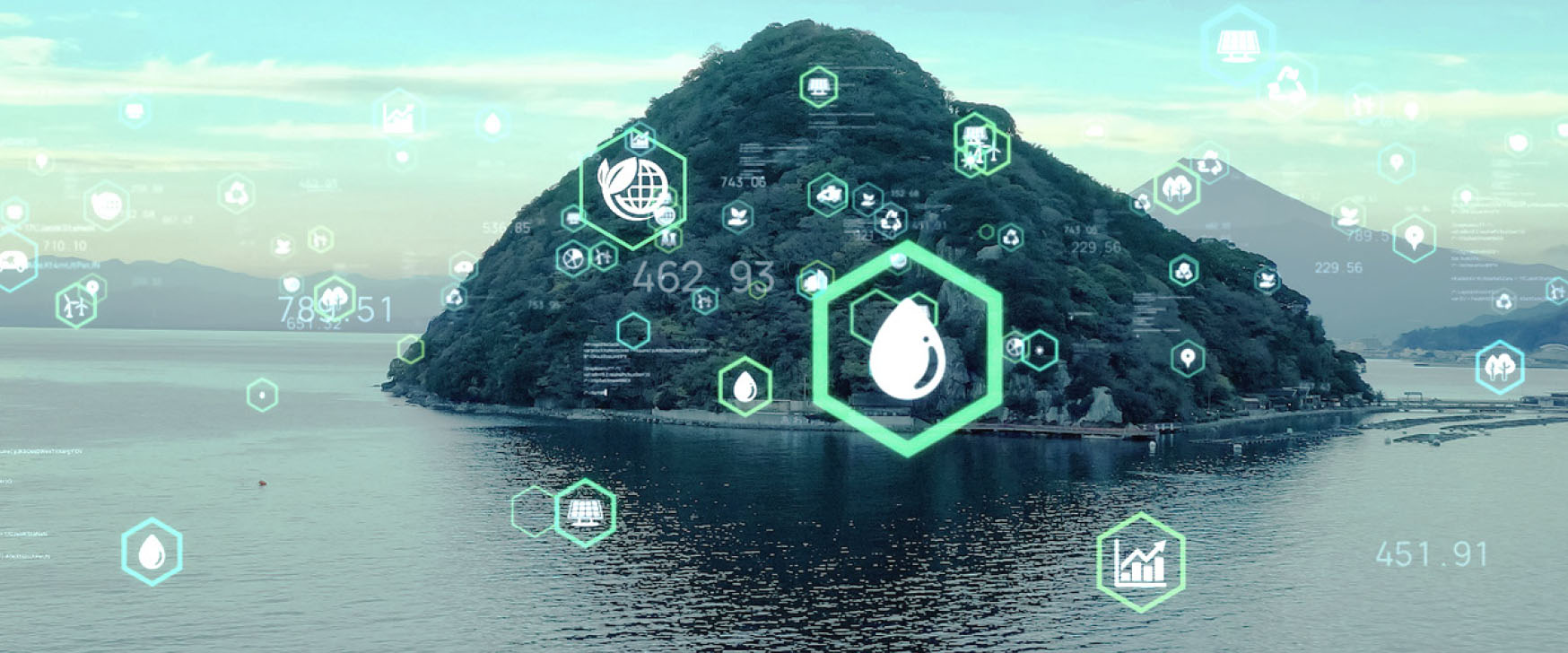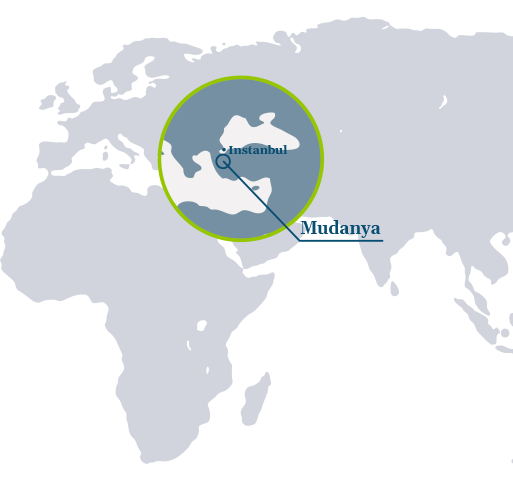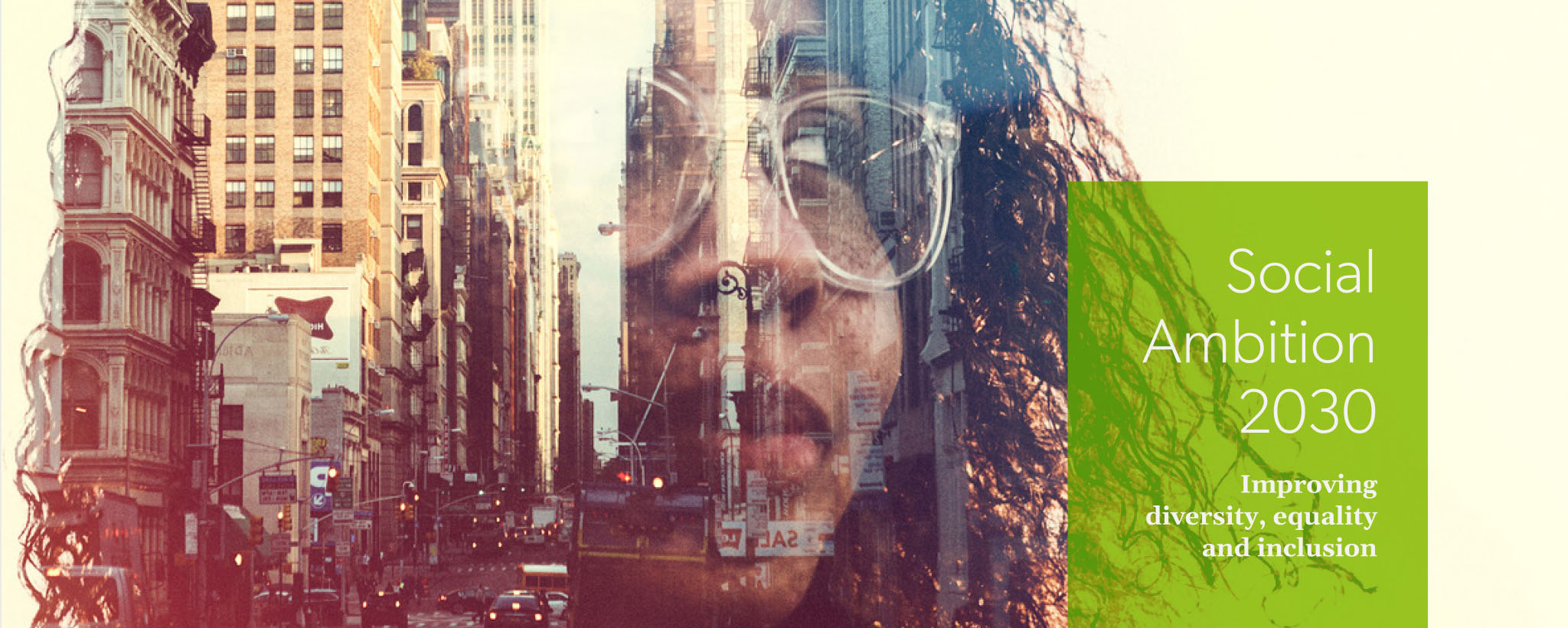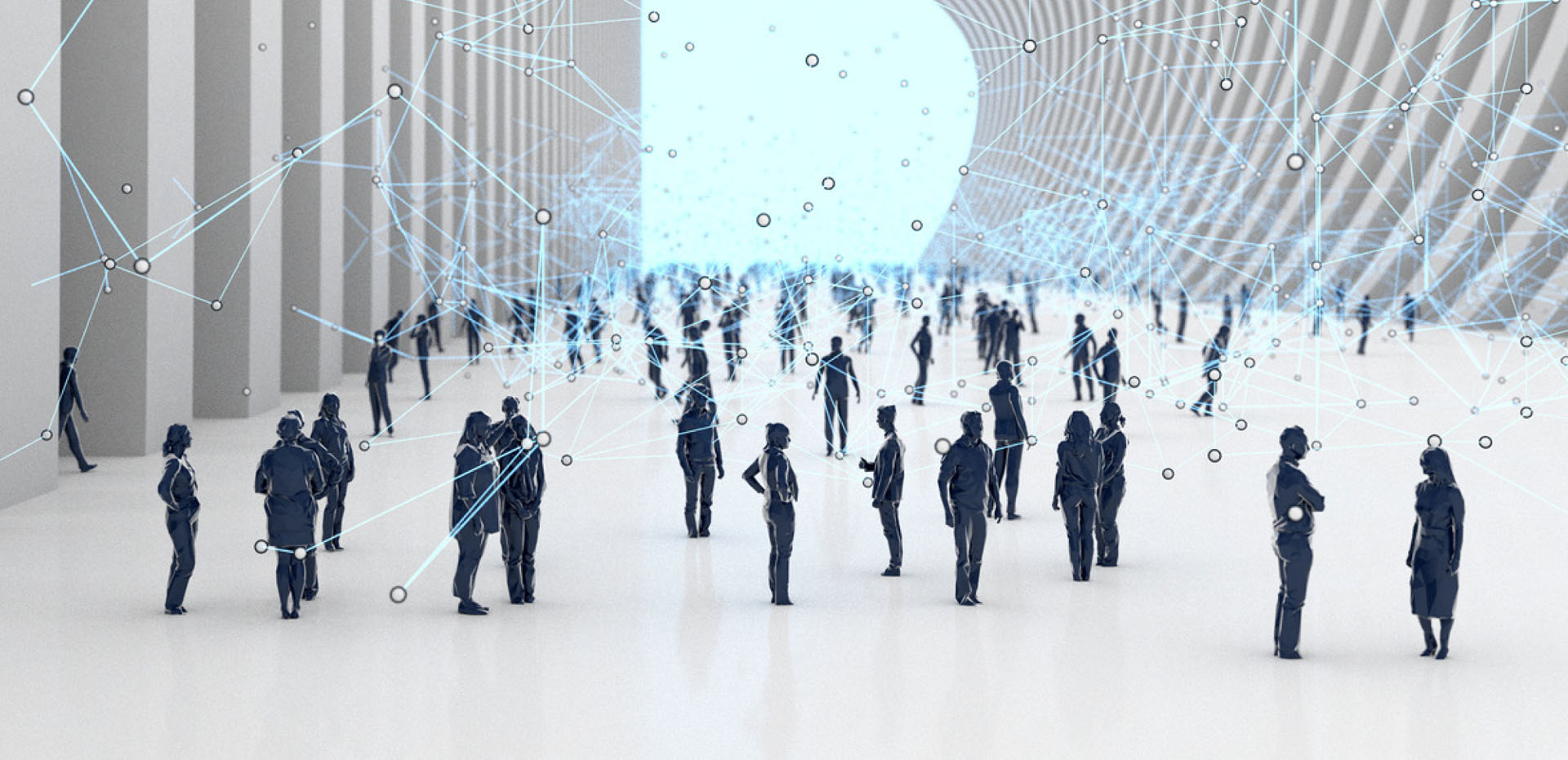We all know by now that innovation is key to the success of any company. But it’s not just what you do in the lab that counts. For Prysmian Group, innovation means understanding and addressing the continuously changing needs of our customers and of the community we’re living in. The way people are dealing with energy and communication is always evolving. In 2021, Prysmian Group innovated its sustainability strategy, setting a demanding new net zero target for 2030 and adding more depth to its commitment with its Social Ambition. This issue offers a close-up look from top management at their plans to get to 2030, and shows how innovation is a strategic necessity in all areas.

Prysmian Group’s Chief R&D Officer and Chief Innovation Officer Srinivas Siripurapu explained how energy transition, digitalization, sustainability and mass electrification are changing.
Srinivas Siripurapu, Prysmian Group’s Chief R&D Officer and Chief Innovation Officer, grew up in southern rural India, where he saw how important it was to have factories with responsible production processes. Trained as a chemical engineer, he has been driven from the beginning of his career by his love for science and innovative materials, and the urge to solve environmental problems - seeing the first as a lever to help the latter.
What does innovation mean for Prysmian Group?
“For us, innovation means understanding and addressing the continuously changing needs of our customers and of the community we’re living in. The way we are dealing with energy and communication is changing. How we heat our houses, how we cook our food, how we drive, how we work, how we interact with each other: all these things will change because of the energy transition, digitalization, sustainability and mass electrification. They’re driving innovation for us. That’s why it’s a great time to be in Prysmian Group’s R&D: it’s a challenge as well as an opportunity, as we can create new products and solutions for these macro trends.
At Prysmian Group, everybody really values innovation as a lever that can be used -- along with cost management and customer proximity -- to drive this change and contribute to something bigger that our communities and the world will find useful.
The focus on climate change and the new COP26 targets are adding a sense of urgency on this topic, accelerating things coming together.”
What are the most innovative projects you are working on?
“We are working on several breakthrough concepts through an innovation strategy that is balanced in the short and longer term to address our customer needs.
Regarding energy transition, our two main drivers are interconnectors and offshore windfarms, and we expect to also see floating wind farms scale starting 2025.
For interconnectors the name of the game is to push more power safely and reliably to reduce the environmental footprint of cables. For example, for the first time we are using our P-Laser HVDC technology in the German HVDC cable project where cables will be able to transmit 2GW per cable (a number increasing over the years). We have to manufacture 1,000 km of these cables in the next four years. That is a significant innovation milestone for the industry. We are talking about a fully recyclable 525kV high voltage DC land cable, but in the future we will also use it for submarine interconnectors. P-Laser permits a more efficient cable production, carries more power and has a lower carbon footprint. So it is a win-win-win for operations, performance, and the environment.
The other interesting development is that we will be able to install submarine cables at a very high depths. This capability has enabled projects in the Mediterranean Sea, such as the Tyrrhenian Link developed for Terna: for the first time a single core HVDC cable will be deployed at more than 2,200 meters below sea level. The previous world record was 1,650 meters. How can we do this? By replacing the cables’ stainless-steel armour wires with aramid fibers. We tested this technology last year installing three-core cables under the Greek sea between the islands of Evios, Andros & Tinos and between Crete and Peloponnese. And there is the possibility of the Eurasia Tunnel, a submarine link that will be built in the future with cables installed at the record depth of 3,000 meters.”
What about digitalization?
“Several aspects of our life are being enriched by all things digital. By 2050 the aim is to have digital inclusion across the entire world population. For digitalization, our main drivers are telecom infrastructure, smart buildings and hyperscale datacenters. I should mention our FlexRibbon technology, where we can pack up to 7,000 fibers into a cable enabling faster installation. Telco networks are all about densification. We have launched the industry’s first 180 micron bend insensitive fiber and we use it in our Sirocco Extreme microduct cables with fiber density exceeding 10 f per square mm. I am excited about the integration of our Prysmian Electronics and our newly acquired Omnisens teams.
With over two decades of in-depth expertise in electronics and optical sensing, we will become a one stop shop for sensing and monitoring solutions for a wide host of industrial applications.
We have also recently launched Pry-Cam Home, a compact solution for real-time monitoring and managing of power safety and efficiency in homes. Stay tuned for more advanced solutions from this team.”
Do you also work on sustainability solutions?
“Yes, for the past five years we have linked our innovation efforts more strongly to sustainability. We are on a continuous journey to conserve precious natural resources, and develop better products in a more efficient manufacturing environment. To that extent we have launched Ecocable the industry’s first comprehensive green label focused on six acknowledged and measurable criteria (carbon footprint, recycle content, circularity, reducing hazardous substances, environmental benefit and efficiency in use). We are focused on decarbonizing both our factories (Scope 1&2) and the entire value chain (Scope 3).
We are investing through an open innovation model on several longer term disruptive ideas for mass electrification. High power megawatt charging of electric vehicles, Hypermobility for low carbon fast transport and Electric highways with dynamic wireless power transfer to name a few. We have developed automated solutions using advanced robotics to reduce manual intervention in hazardous work around high power electricity. We are always scouting for the next big thing together with our customers, new technology providers and top universities world wide.”
PRYSMIAN GROUP’S VIEW OF THE FUTURE
We expect to see floating wind
farms scale
by 2025
Digital inclusion across the entire
world population
by 2050

“As a widely-held public company with no controlling shareholder, interacting with stakeholders has always been a key part of Prysmian Group’s business strategy. That means Prysmian was able to respond quickly to an increasing attention to sustainability issues, thereby implementing policies that led to concrete actions. This engagement has created a sort of “snowball effect” that has attracted new ESG investors. In 2021, nearly one in two investors in Prysmian Group is ESG-driven, up from 16% in 2017. Thanks to the stakeholder engagement review, we have been able to launch some extremely relevant initiatives.”
“The launch of the “Side by Side” diversity program back in 2016; the decision to connect ESG criteria to variable remuneration in 2018, and setting up a dedicated board committee in 2020 to advocate for ESG issues to be translated into concrete action across the company’s operations. And ahead of this year’s board review, Prysmian Group identified ESG competencies as a core skill in the board skill matrix.”
“Prysmian Group accelerated its sustainability commitment in 2021 with two major new initiatives. It launched its Climate Change Ambition, reflecting a growing concern among investors about global warming. Prysmian Group has now committed to reducing absolute Scope 1 and 2 GHG emissions by 46% by 2030, from the 2019 baseline. It also committed to reducing absolute Scope 3 GHG emissions from purchased goods and services and from the use of sold products by 21% within the same timeframe. The Net Zero emission target has been brought forward to 2035. These targets were approved by Science-Based Targets Initiative (SBTi) in September 2021. To meet these goals, the Group will be investing €100 million in the next 10 years.”
DEVELOPMENTS in the Group’s Sustainability Strategy
Reduction by 46%
ABSOLUTE SCOPE 1&2 GHG EMISSIONS BY 2030
Reduction by 21%
ABSOLUTE SCOPE 3 GHG EMISSIONS FROM PURCHASED GOODS & SERVICES0
“There cannot be sustainable growth without people at the center. That’s why in July Prysmian launched its Social Ambition, which sets specific targets on efforts to improve diversity, equality and inclusion (DE&I), digital inclusion, community empowerment, employee engagement and upskilling. The new 2030 targets support the achievement of Prysmian’s Social Ambition objectives and further align the Group with the United Nations Sustainable Development Goals.”
“Over the years we have been seeing the growing role of ESG investors, to the extent that today almost one out of two investors are ESG-driven, which is a guarantee of the high level of sensitivity we have on these issues. Prysmian Group’s sustainability journey has also been reflected in its improved index rankings. In 2021, Prysmian Group ranked first with 87 points in the ELQ Electrical Components & Equipment sector on the Dow Jones Sustainability World index, and was the only pure cable maker included in the most recognized sustainability index at global level, covering over 5,300 companies.”
“They are a key partner in Prysmian Group’s ESG strategy. We engage with our suppliers. They are extremely relevant to drive the decarbonization of our supply chain. We integrate our ESG KPIs into the selection process of our suppliers, and a constant engagement with customers and suppliers drives our innovation in our supply chain.”
“To make sure that Prysmian Group translates these ambitions into actions and behaviors, the company has put governance structures in place at board level and across the company to cascade these goals around the world.
In addition to a board-level Sustainability Committee, the Sustainability Steering Committee and Diversity, Equity and Inclusion Steering Committee include executives from the main corporate functions as well as the regional CEOs. The two Committees work hand in hand. The Group appointed a Diversity, Equity and Inclusion Director in 2019. These Committees work with local and business ambassadors. In each region, the Group has a Sustainability Ambassador to make sure our voice reaches the local communities, and that we listen to their voice. The same thing happens with the business: we have sustainability ambassadors for each business to make sure that we are able to tailor sustainability to the specific requirements.”

The impacts of climate change such as rising sea levels, changes in rainfall patterns, and higher temperatures are already partly unavoidable, even if the world succeeds in reaching the carbon emissions targets set at Glasgow that would limit warming to an increase of 1.8-2.0 degrees centigrade by the end of the century with respect to pre-industrial levels, said Carraro in a presentation called “The Impacts of Climate Change: A Look into the Future.”

CARLO CARRARO
Carraro said that temperatures will reach 1.5C above 1850-1900 levels by 2040 in any future mitigation scenarios, causing an “unprecedented” frequency of extreme weather events “even at warming of 1.5C.” The world is currently on track to reach +2.7C and the best that can be obtained by fully implementing the Glasgow commitments is a temperature increase between 1.8C and 2.0C, according to the International Energy Agency. Additional efforts would be needed to stabilize temperature increase at 1.5C.
“We have already changed the climate, and some of the impacts will be unavoidable -- which implies that it is urgent to keep these impacts from being worse than what they will already be,” said Carraro, who is also Professor of Environmental Economics at Venice University. “We need to intervene on both sides: we need to reduce emissions, to avoid an even worse situation; and adapt to climate change, because unavoidable impacts may highly damage many regions of the world, the poorest in particular.”
The year 2021 will be remembered mainly for the Covid-19 pandemic. But it was a key year for climate change as well. In August 2021, the IPCC’s 6th Assessment Report - widely seen to be the most authoritative and up to date source on the topic -- asserted that it is indisputable that climate change is caused by human activity. As a result, 197 countries subscribed to the statement that “Recent changes in the climate are widespread, rapid, and intensifying, and unprecedented in thousands of years.”
In October 2021, 197 negotiating parties met in Glasgow at the COP26 summit and explicitly committed to reducing the use of coal, and over 140 countries set net zero targets. The Glasgow Climate Pact reaffirms the Paris commitment to limit the temperature increase to 1.5C by the middle of this century.
But the planet risks temperature increases much higher than that. The world is on track right now to hit +2.7C of warming by 2100, the UN said in October. Europe, is currently at +2.2C. Every additional increment of global warming increases the projected changes in extreme weather, he said. For example, even if temperature increase is limited at 1.5C, the frequency of events that would have occurred once every 10 years increases to a likely 4.1 times every decade, and at 2.0C a once-in-10-year event would occur 5.6 times more frequently.
For events occurring once on an average of every 50 years, the increase is even more marked. At 1.5C, the event would be likely to occur 8.6 times more frequently, rising to 13.9 times at a global warming level of 2.0C.
Climate change is already an economic problem, said Carraro. A study from the University of California at Berkeley estimated that global economic losses from global warming in 2017 was already about $190 billion, or 0.25% of global GDP. The expected loss in the EU could reach 2%-2.5% of GDP in 2050, he said.
What can be done? All models suggest the same strategy: energy efficiency in all sectors, including building and transport; electrification of heating, transport and industries; decarbonization of electricity generation through renewables, hydrogen, nuclear power and C02 removal.
COP26 SUMMIT:
the numbers
When
10/2021
Where
Glasgow
Negotiating parties
197
Countries
over 140
Emissions must now be reduced more rapidly than they have been in the past, Carraro said, pointing to the IPCC’s conclusion in its August report that “unless there are immediate, rapid, and large-scale reductions in greenhouse gas emissions, limiting warming to 1.5C will be beyond reach.”
“Europe, which is the best in the world from this point of view, has reduced emissions from 1990 to 2020 by 20%,” he said. “And now in another 30 years, we need to reach minus 55%. That’s a further 35% in 30 years. So the speed of reduction must be at least two times the speed of reduction that we had in the past. This is very challenging, because of the required deep change in the energy system, but also the society and the economic system at large.”
Fortunately, the lower cost of renewable energy is one of the enabling and accelerating factors that can help us achieve the energy transition, he said. Technological innovation, digital transformation and green finance are the three tools that can help companies and governments meet the challenge.
Regarding technology, there are five main sectors that could attract $2 trillion of capital investment by 2025. They are concentrated in electrification of industry and transport, agriculture, the power grid, hydrogen production, and carbon capture.
Digital transformation is key because it enables the changes that need to happen in all sectors and technologies, from energy efficiency to digitalized energy networks to forest protection and advanced monitoring of livestock.

Finance is the most important of these three enablers right now, he said. “The good news from Glasgow is that it’s clear that the financial sector is ready to move very important resources into this direction,” he pointed out. “The goal is twofold: redirect investment to focus on renewables and other low carbon sources, and increase green investment to what we will need in the next 10 years in order to achieve the 2030 and 2050 targets.”
At COP26, it was clear that public policy will not be among the enabling factors to achieving the goal of limiting global warming to 1.5C per year, said Carraro. Developed and developing nations are still far apart, and all countries in general have problems in setting and approving short term goals. More will be needed from companies if governments are not up to the task.
“We need more than what we decided in Glasgow,” he said in conclusion. “We must rely on technological change, and company strategies. The contribution of companies is very important to get to zero emissions in 2050-2060 in the main world countries, e.g. the G20s, which is what we need to keep temperature increase below at least 2C by the end of the century.”
FIVE MAIN SECTORS ATTRACTING TECHNOLOGY INVESTMENT
\ Industry and transport
\ Agriculture
\ Power grid
\ Hydrogen production
\ Carbon capture


“We started in 2020 knowing that sustainability is a journey rather than a destination,” she explained a speech during the online event. “Prysmian Group sees that the challenges in business, society, and the environment can only be overcome by making sustainability the core of the business and making the necessary cultural transformation.”
After an initial pilot phase of “Sign It,” Ozcan and her team analyzed trends, defined their vision, assessed impacts, established roles and came up with a detailed sustainability plan and targets.
The plan is based on four pillars, and Prysmian Turkey has developed KPIs for each one, she explained. These pillars are eliminating footprints, circular resource use, enhancing the business model, and developing employees and the community.
Prysmian Group’s Climate Change Ambition calls for it to reduce absolute Scope 1 and 2 GHG emissions by 46% by 2030, from the 2019 baseline. It has also committed to reducing absolute Scope 3 GHG emissions from purchased goods and services and from the use of sold products by 21% within the same timeframe. The Net Zero emission target has been brought forward to 2035. That means every region must do its part to ensure that this important goal is achieved.
Accordingly, Prysmian Turkey has an ambitious target to reduce its carbon emissions by 30% by 2030. “With the projects completed in 2021, we will have reduced more than 1,000 tons of CO2 by year-end” she said. “With the deployment of these projects, we enabled a reduction that could only be offset by trees covering an area of 280 football fields.
We will continue to benefit from the early savings from our projects, which is estimated to correspond to 26% of our target, until 2030. On the other hand, we recognize our responsibility to do more in the coming years and commit to work hard.”
The Challenge

Ozcan’s strategy for Turkey is fully aligned with the group’s global ESG efforts. In 2020, Prysmian Turkey committed to producing low polluting products, cutting down on emissions and waste. It also aims to build a “Zero and Beyond” culture that integrates workplace health and safety with the goal of becoming injury-free. And it will continue its strong progress made in the field of gender diversity.
Under former CEO Cinzia Farisè Prysmian Turkey won external recognition as a Diversity & Inclusion center of excellence. Half of Istanbul-listed Prysmian Turkey’s board of directors is female, and so are 35% of white-collar employees and 25% of its senior managers. Prysmian Turkey’s achievement was recognized by the “Women Empowered Board of Directors” award by Sabanc? University Corporate Governance Forum in 2020 during the “Turkey Women Directors Conference.”
Ozcan, who was named CEO in June 2021, shares her predecessor’s focus on female empowerment.
“Equality is one of the most critical subjects now being discussed all over the world, and I believe inequality in business life and daily life is the biggest challenge we face as we work towards sustainable development,” she said.
“The climate crisis is also worsening inequality in many dimensions. Disadvantaged groups like poorer people, women and girls are struggling for survival. Despite its critical importance, social equality has not been resolved, nor is it improving. On the contrary, the gap between the privileged and the rest are widening. The UN’s Sustainable Development Goals are some of the most important tools we have to tackle this inequality.”
In July, Prysmian Group launched its new Social Ambition for 2030, which includes commitments to improving diversity, equality and inclusion (DE&I); digital inclusion; empowerment of communities; and employee engagement and upskilling.
New 2030 targets support delivery of Prysmian’s Social Ambition objectives and further align the Group with the United Nations Sustainable Development Goals. The new target calls for 50% of desk workers, 25% of its global workforce and 30% of its management to be female in 2030.
DIVERSITY:
new 2030 targets
Desk workers
50%
Global workforce
25%
Management
30%

“Digitalization had been underway for several decades now in nearly every sector of cultural, social, and economic life: the pandemic multiplied the pace. Think of the online shopping/home delivery economy which exploded as stores and restaurants shut down and people throughout the world confronted the challenges posed by lockdowns. There are positive and negative effects, and one of the latter stands out in particular: the continuing growth and consolidation of the great transnational empires of our time, the Amazons, Googles, Facebooks. The democratic promise of the World Wide Web as a civic space is unlikely to be fulfilled unless this consolidation is counterbalanced by more adequate legislative and regulatory frameworks, particularly in the social media and www infrastructure domains.”
“Humility in the first instance, but I hope that the greater lesson will lead to an overcoming of anthropocentrism as humanity confronts the future.
The pandemic reminds us that human beings are part of nature, which means not the subjugators of nature but the subjects of nature: just one living creature in a world brimming over with other living creatures with their own legitimate claims on the natural world. The sort of tech saviorism that fills the pages of newspapers and magazines, that tenders promises that humanity will innovate its way out of every long-term problem (from aging and disease to climate change) or that this or that quantum leap “will change everything” and “is right around the corner” is mostly marketing nonsense.”

“As both rosy and terrifying. I am optimistic about humanity’s collective ability to transition to renewable energy sources and to incrementally improve upon many aspects of the contemporary consumerist economy. I am particularly interested in the future of rural areas as broadband becomes available within these extra-urban settings: this future encompasses everything from “smart agriculture” to sensor-equipped national parks to what one might describe as the “wired” natural landscape.
I’m less sanguine about so-called “smart cities.” A city is not a computer and, contrary to what is presupposed in much of the conversation regarding smart cities, the reality of future urbanization will consist in the formation of massive third world megacities where traditional infrastructure challenges will be daunting, if not overwhelming. Huge population movements, many driven by climate change, will place the system of nation states and controlled borders under intense pressure.”
“The obvious answer is the connected supercomputer that homo digitalis carries about with him or her. With the proliferation of 5G networks, that device will be promoted to an even more central role in the governance of every aspect of life: like it or not, it will become the control center, dashboard for every IoT device (and these are already proliferating), and social lifeline: the access point to our online and offline experiences and passions, a constant companion even as we move around the world. AI- and machine learning-based applications will allow for even higher degrees of personalization of these control centers.”
